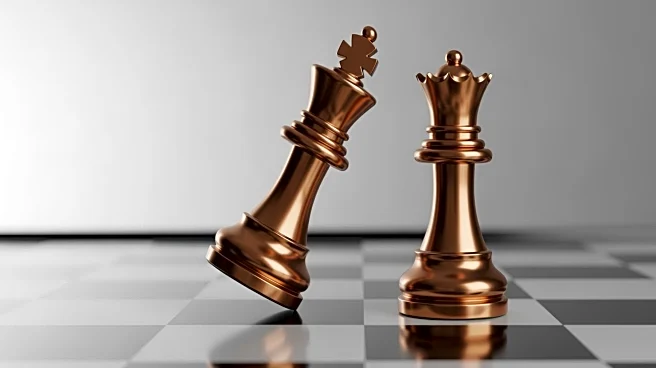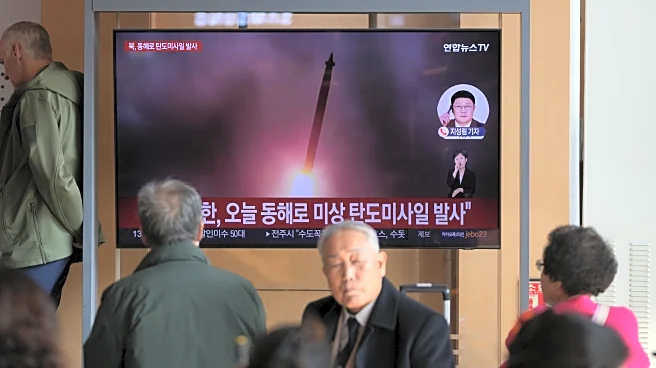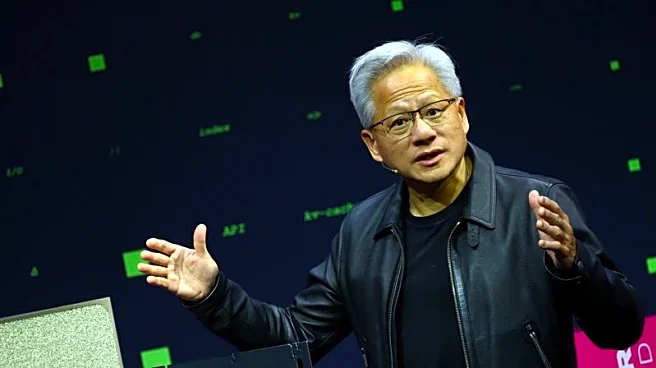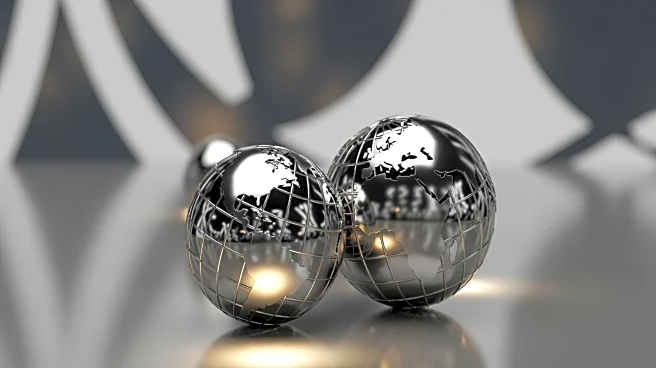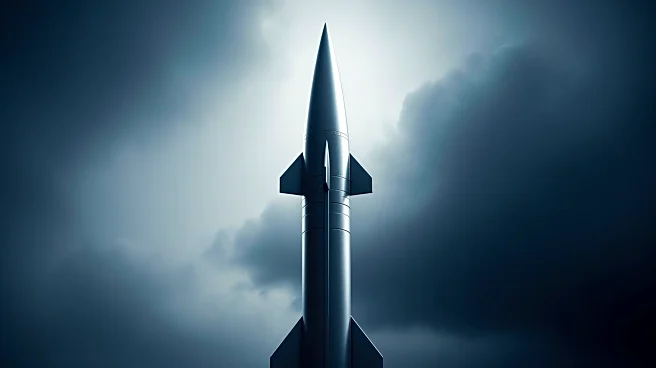What's Happening?
President Trump met with Chinese President Xi Jinping in South Korea for tariff negotiations. The meeting was notable for the body language displayed by Trump, which experts say signaled dominance. Trump positioned
himself in the 'power position' during the handshake, a move that is often sought after by politicians. Body language experts noted that Trump used a series of gestures, including pulling Xi closer and patting his back, which are seen as displays of control. The handshake, which deviated from typical diplomatic rituals, was extended until reporters began asking questions, further emphasizing Trump's attempt to assert dominance.
Why It's Important?
The body language exhibited by President Trump during his meeting with Xi Jinping could have implications for international relations and diplomatic negotiations. Such displays of dominance may affect the perception of U.S. leadership on the global stage, potentially influencing future interactions with other world leaders. The emphasis on power dynamics in diplomatic settings can impact the negotiation process and outcomes, affecting trade agreements and international policies. Observers and stakeholders in international diplomacy may need to consider these non-verbal cues when assessing the U.S.'s approach to foreign policy.
What's Next?
Future meetings between President Trump and other world leaders may continue to be scrutinized for similar displays of dominance. Analysts and diplomats will likely watch for any shifts in Trump's approach, especially in high-stakes negotiations. The impact of these interactions on U.S.-China relations, particularly concerning trade and tariffs, will be closely monitored. Stakeholders in international trade and diplomacy may need to adapt to the evolving dynamics influenced by such non-verbal communication.
Beyond the Headlines
The handshake between President Trump and Xi Jinping highlights the importance of non-verbal communication in diplomacy. It raises questions about the role of body language in establishing power and influence in international relations. The deviation from traditional handshake rituals may reflect broader shifts in diplomatic practices, where leaders increasingly use physical gestures to convey messages beyond verbal agreements.
